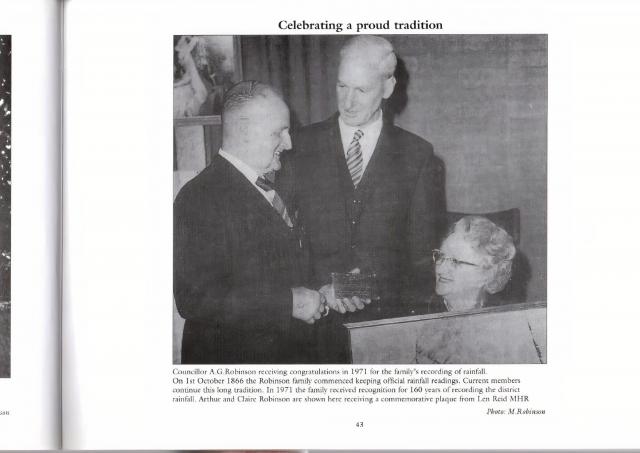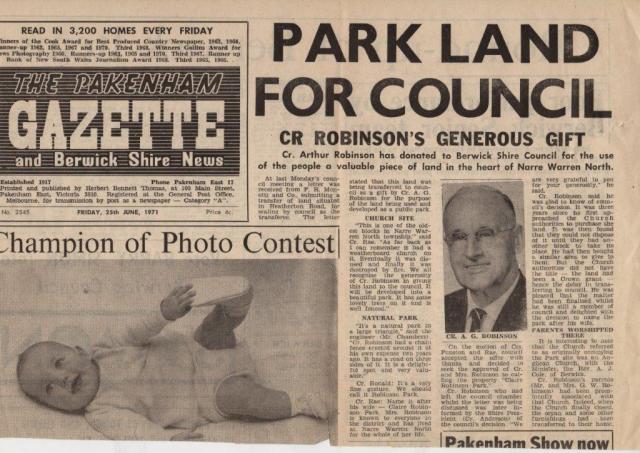NEIL LUCAS continues his look at the significance of place and street names in the region, this week focusing on how the site of a church turned into a park in Narre Warren North, and how the City of Caserta is assumed to have influenced the naming of Caserta Drive in Berwick.
Claire Robinson Park, Main Street, Narre Warren North
This park, surrounded by three roads (Heatherton, Main and Memorial), is located on the site of the St John’s Anglican Church at Narre Warren North.
Unfortunately, the church was destroyed in a fire.
Following this disaster, and a decision not to re-build the church, local councillor Arthur Robinson MBE, negotiated with the Anglican church authorities to purchase the land.
The arrangement agreed to was that Cr Robinson would personally provide a block of similar size for the church in order to acquire the land. He succeeded in achieving this and arranged for a chain fence to be erected around the triangular parcel of land which he gifted to the Berwick Shire Council as a park.
The Shire of Berwick accepted his generous offer and named the park after Arthur’s wife Claire – “Claire Robinson Park”. Claire supported Arthur in his many decades as a councillor and served on a number of local committees including membership of the Dandenong Hospital Auxiliary committee.
The Robinson family’s association with Narre Warren North had begun in 1856 when James Robinson purchased 107 acres (43 hectares) which was developed over the years by family members as an orchard growing mainly apples, but also smaller areas of peaches, plums and pears.
Arthur Robinson, George Robinson’s great-nephew, born in 1885, managed the orchard during his adult life during which time he served as a local councillor on the Shire of Berwick for 35 years.
Caserta Drive, Berwick
The reason for the application of the name “Caserta” to the roadway in Berwick is not known, but it is assumed the road was named after the only city of that name in Italy.
The City of Caserta is located just 40km to the north of Naples and Mt Vesuvius in Southern Italy. Caserta is well-known for its Royal Palace of Caserta – a large baroque palace located within an extensive parkland. The palace is listed as a UNESCO World Heritage site.
The palace began construction in 1752 and although built for King Charles VII of Naples, Charles never occupied the building – rather, he abdicated in 1759 to become King of Spain. Thereafter, the palace was occupied by Charle’s successors.
The park in which the palace is located comprises 120 hectares and includes many lakes and waterfalls, and an “English Garden” – an informal garden, compared with the symmetrical gardens that were more the fashion in earlier times. Interestingly, the palace has been used at various times in movies including Mission Impossible and Star Wars.
At the same time as the construction of the palace, an aqueduct was designed and constructed to provide water to Caserta. The project included a significant structure which bridged a valley and was modelled on Roman constructions. The bridged section is more than 500 metres in length and 55.8 metres in height. It, like the palace, is World Heritage Listed.








